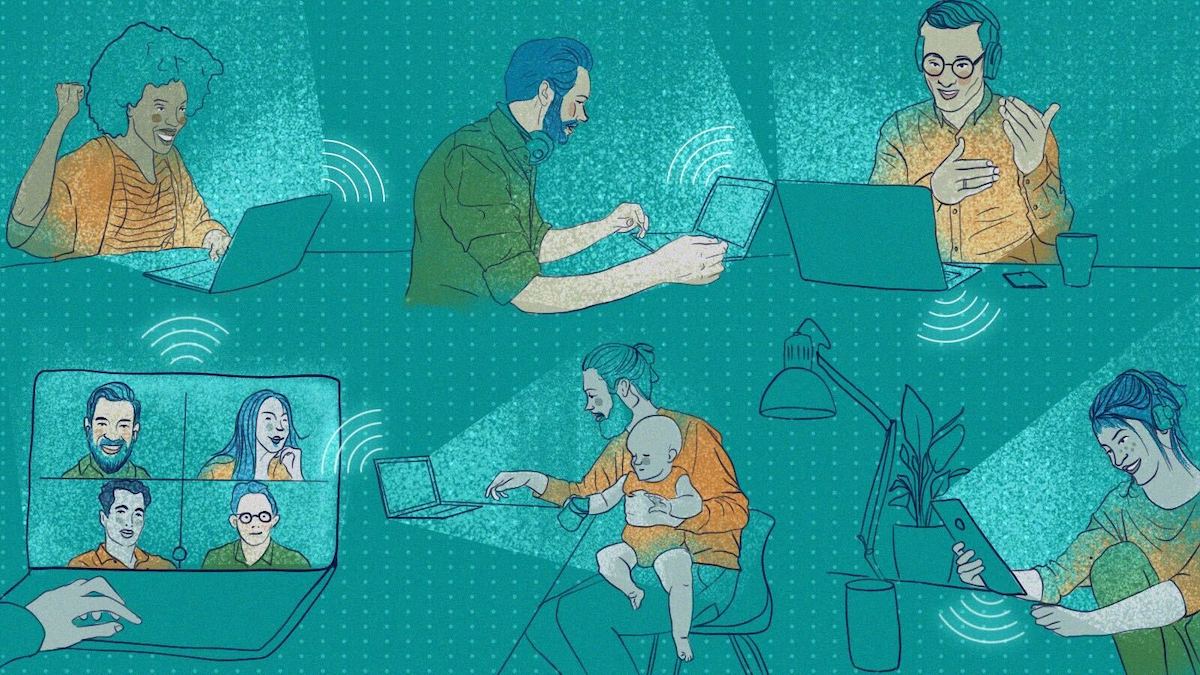What makes one business more agile than others in its field? In 2020 and beyond, the answer is, for most types of businesses, associated with mobility. An organization’s ability to remain mobile affects how and where its employees accomplish work, its ability to communicate with customers, and provides a myriad of opportunities for further optimizing your agile strategies and reducing resistance to change.
The trend toward mobile agility has two underlying causes. The first is greater access to technology, which connects distributed teams regardless of their location, and the second is an uptick in worldwide transactions. The former has allowed employers to develop increasingly mobile-friendly workforces, while the latter has spurred business to customer relationships that aren’t limited by location.
In order to fully understand the trajectory toward mobilized workforces, let’s examine some of the key technology trends that contribute to agile businesses in the forefront and their ability to create productive teams.
UNIFYING THE WORKFORCE THROUGH DATA
Your mobilized team will inevitably be a distributed one as well, whether you’re constantly traveling to meet with overseas clients or have spent the last ten years working from home. That’s why it’s important to consider if or how mobilization will impact your ability to collect and draw insights from your company data. When your entire team works together, condensing your analytics into a single source of truth is simple—customer information can remain localized, and insights around employee performance and development are directly observable.
But how can you preserve the integrity of your data when your workforce is in a remote setting? Enter two key technological developments contributing to mobile business: cloud computing and big data analytics. If big data houses a considerable body of an organization’s information, cloud technology is the infrastructure that allows this data to be collected, organized, and processed in real-time over the internet.
For many companies, the sheer volume of big data is equal parts benefit and detriment. You may glean valuable insights from big data, but they may come at the cost of excessive time and resources if you have to manually verify and structure this information. Integrating the data mining process with cloud tools helps you find this data across multiple sources and then maintain it, which is invaluable for mobilized teams who are accessing this information from separate devices around the world.
COMMUNICATING THROUGH DIGITAL INTERFACES
Your business’ remote agility is intrinsically linked to both its communication success and your ability to scale off-site communication as you grow. Whenever you experience a change in your work processes, your team’s agility in its response can be measured by how quickly, clearly, and widely you disseminate new information. This means that each and every member of your team needs to have mobile-friendly communication options to ensure they are connected regardless of their work locations.
Perhaps the best example of communication technology that easily scales and bridges the remote communication gap is Voice over IP phone systems. If you’ve ever called someone through a tablet, laptop or desktop, there’s a good chance you’ve interacted with VoIP technology, even if you’ve never formally heard of it. Essentially, Voice over IP takes the functionality of a typical, wired phone set and upgrades it to allow users to communicate over their internet connections.
Because VoIP integrates with all types of tech—from computers to smartphones to tablets—it enables mobile teams to continue to stay in touch with one another using a device of their choosing. VoIP systems have also become a crucial element of the “virtual workspace,” or the digital alternatives to physical office equipment that would prove impossible to carry with you from one work location to the next.
ACCLIMATING TO THE MOBILE CUSTOMER
Just as technology unlocks mobile work opportunities for businesses, these same tools can be used to satisfy a B2B audience that is increasingly mobile-oriented. Combine the incline in distributed workforces and work done through smartphones and tablets, and it’s no surprise that many B2Bs are turning their gaze toward mobile purchase journeys.
This means that a company that may have once relied solely on in-person sales pitches with clients—as well as localized relationships with their business customers—may now have the potential to tap into larger online communities, so long as they are optimizing their current experience for mobile users. One technology that helps mobile companies engage with equally mobile buyers is known as the Internet of Things, or IoT. At its core, IoT is the sum of all the devices in the world that are connected through the internet (and therefore, to some extent, connected to one another). The Internet of Things is so impactful that many consider IoT to be one of the primary drivers of the modern industrial revolution.
If your customers are unable—or unwilling—to connect with you in-person, enabling IoT capabilities is one solution to keep you connected and in a position to respond to customer issues with agility. As one specific example, imagine you are able to design a product that operates within the IoT network. You might set up this product to notify you when your customers experience an issue, run out of stock, or require an update. The Internet of Things will enable you to be aware of these scenarios and more from wherever your customers are based. Similarly, if you serve other businesses as a necessary component of their supply chain, syncing your supply measurement tools with IoT can give you real-time insights on current supply levels, allowing you to forecast exactly when these companies will require a re-stock.
FINAL THOUGHTS
When it comes to riding the waves of change, you might sometimes feel like there is little that your business can do to brace for these shifts in your industry and rewire the way you work. The mobile workforce is no exception in that it will impact every type of business—enterprise to SMB, healthcare to SaaS startups.
By staying informed on the most current mobile trends and accepting these new business practices as they arise, you’ll have a leg up on competitors that are more averse to change and have better control of where this technology leads your business in the years to come.
YOU MIGHT ALSO LIKE:
How you can organize a productive team in a business?
5G e IoT: la quarta Rivoluzione Industriale
Big Data transform Business Intelligence and Analytics platforms



